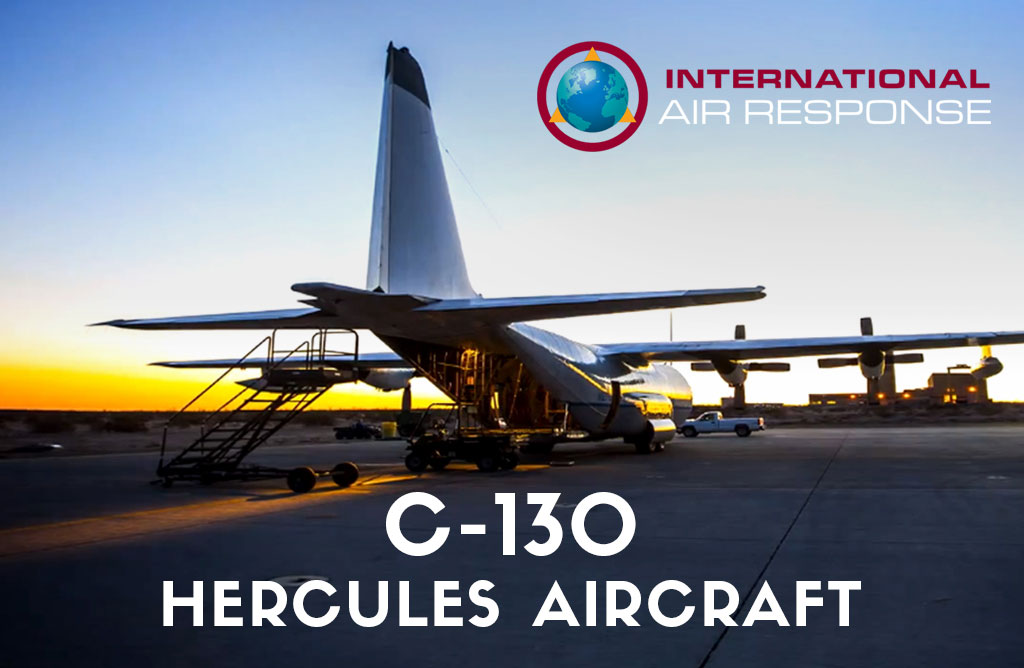Aerial Delivery
C-130 Hercules – The airborne delivery platform of choice – Develop and train systems and personnel for real-world operations using standard aerial delivery equipment and procedures
IAR C-130 Hercules aerial delivery capabilities include:
- High altitude airdrop up to 30,000 feet
- Airdrop of large objects including vehicles
- Heavyweight single-item airdrop capability up to 25,000 pounds
- Pressurized and climate controlled cargo bay
Each of our C-130s is equipped with the standard 463L cargo handling system which is purpose-built for aerial delivery operations. The 463L system is capable of both gravity and extraction airdrops from any altitude and airspeed within the C-130’s performance envelope. In addition to the rear cargo ramp and door which is standard on all C-130s, IAR’s aircraft are unique in that they are equipped with paratroop doors. This gives aerial delivery clients additional exit points not available with other C-130 providers.
A Convenient & Cost Effective Solution
- Large indoor airdrop system rigging facility
- In-house expert parachute rigging and loadmaster support
- Access to high altitude airdrop areas
- Close proximity & short flight duration to multiple drop zones
Support equipment & personnel provided by IAR:
- K Loader (Emerson A/S 32 H-5A) and various fork lifts
- Off-road range access / payload recovery vehicles
- Ground range safety observers with air/ground communications
Submit a Service Inquiry to learn more about how IAR’s extensive aerial delivery capabilities and expertise can benefit your organization.
How aerial delivery works
Aerial delivery is challenging. When it comes to aerial government support services, aerial drops and delivery aren’t just about flying and dropping parcels. It requires great precision as outdoor elements will affect the flying and feasibility of the drop. Timing is everything which requires practice and knowledge of the area.
International Air Response has in-house loadmaster support and a parachute rigging system to ensure that the delivery will be executed smoothly. Be it for single or multiple drop zones, IAR’s expertise is every client’s peace of mind.
Benefits of C-130 aerial delivery
Airdrops are not just done for humanitarian purposes. It’s also used for emergency operations where a certain cargo has to be flown to another area within hours. With the in-land traffic possibly impeding the transit, aerial delivery becomes an excellent option.
Large payloads. Unlike in-land delivery, aerial delivery and airdrops can carry as much as 25,000 pounds in one flight. This is why aerial government support services and even private companies use C-130s for their operations.
Climate-controlled cargo bay. Perishable goods and sensitive electronics require a specific environment to remain in good shape. Good thing, the C-130 Hercules aircraft can be retrofitted to house climate-controlling equipment.
Airdrop of small to large items. From sacks of humanitarian aid to large vehicles, aerial delivery can transport just about anything. Given IAR’s expertise and precision, the cargo will be delivered with care.
High-altitude delivery. For areas where flying low is a big hazard, C-130s can perform airdrops from 30,000 feet above the ground. Also, the aircraft is known to have paratroop doors for military delivery and extraction.
A C-130 Hercules aircraft is a versatile plane. It has proven its prowess in aerial delivery and with IAR on the helm, your delivery operations will be right on time.
Aerial delivery in the government today
Airborne systems have been in use by the government for a slew of purposes. Relief delivery, for one, is a major avenue to send supplies to inaccessible areas. Since this operation requires different altitudes and speed of flying, the C-130 Hercules aircraft becomes a perfect fit for the job.
Airdrops are done whenever the government forces can’t set foot in a specific area. War zones, calamity-stricken areas, and the lack of landing space are just a few of the reasons aerial government support services tap the help of the aviation sector.
The UN World Food Programme and the International Syria Support Group are just some of the organizations that utilize aerial delivery for humanitarian aid. The insurgency in the area is already exploiting the “surrender or starve” condition to force the military forces to yield.
This is worsened by the fact that land-based delivery of humanitarian aids is being obstructed and harassed by different terrorist groups. With this, the government flies within the affected zone to supply more than 400,000 people of food and other basic needs to survive.


